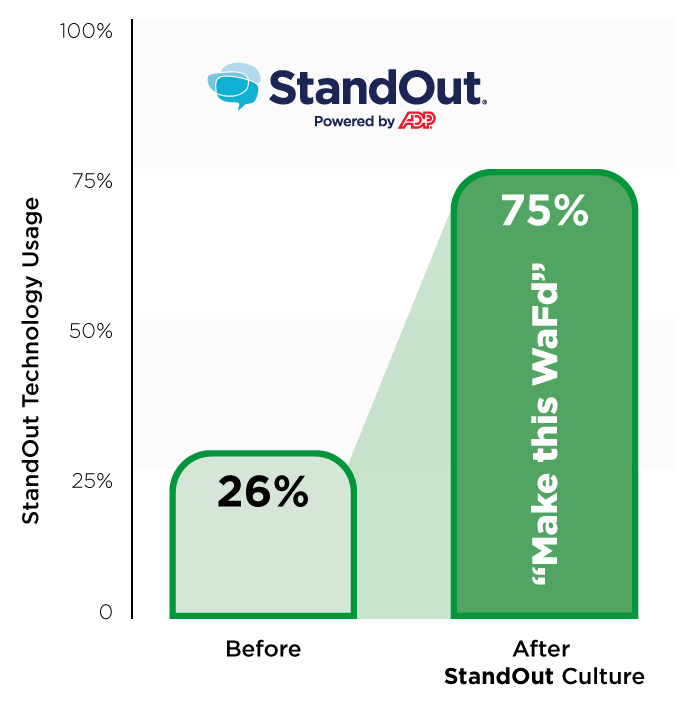The Client:
WaFd Bank, now the second-largest bank headquartered in the Pacific Northwest.
The Challenge: Changing Culture at WaFd Bank
We needed to get people to lean into the purpose of StandOut, which is improving everyone’s communication experience. Then StandOut came out with these videos that answer a lot of the questions. They remove the fear factor for leaders and employees.
Julia Thomas, WaFd VP, Senior Universal Training Manager &
Lisa King, WaFd SVP, Chief People Person
The Solution: “Make this WaFd”
WaFd knew that they had to make StandOut more than “just another thing to do.” So they doubled down on ensuring that StandOut was integrated into the culture in a way that resonated with their people.
It started by putting frontline leaders through the StandOut Team Leader program. They piloted an Adoption Workshop to generate ideas for a WaFd-authentic approach. And they showed cartoons — the animated videos StandOut includes as guides to Check-Ins were instrumental in answering employees’ questions and removing the fear of change. Their efforts made a world of difference.
The Results:
WaFd was able to speak in a more powerful way to support leaders, teams and individuals across the company — both tenured and new associates — by rallying around a culture of connection and strengths.

Employees using StandOut increased from 26% of the organization to 75%.
Regular Check-In usage moved from 40% to 54% year over year.
WaFd is proud of its long history, but change is inevitable and necessary in any business culture. They recognized that they needed to develop a culture of real-time performance coaching and alignment of performance objectives, and knew that new HR approaches and tools could help with this.
StandOut represented a natural fit for an organization wanting to create a strong sense of connection between team leaders and team members, helping leaders understand their team’s strengths and how people were feeling about their work, week by week. However, WaFd also knew that for these new practices to be successful, they would have to be willingly adopted by employees.
Download the full WaFd case study below.